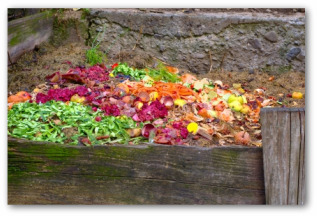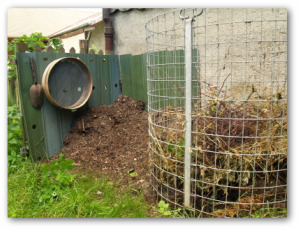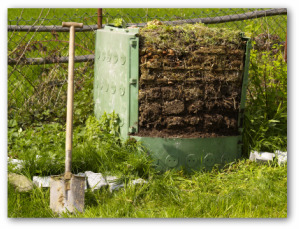
Easy plans for making a compost pile in your backyard. Recycle kitchen scraps and lawn debris to create your own rich organic compost that makes perfect fertilizer for your yard and vegetable garden.
Amending the soil by making a compost pile both renews the ground and recycles natural resources. The best vegetable gardening course is to have your garden soil tested each year. Depending on the test results, follow the recommendations given to amend the soil.
Knowing what nutrients are needed beforehand helps cut down on a number of cultivation tasks in a gardener's recycling plan.
Making a compost pile is an ideal vegetable gardening technique to reuse the majority of your kitchen and garden waste and recycle it back into your garden. Composting is fundamentally a method used to speed up the decomposition process.
Besides benefiting your garden beds, the mixture can be used in potting soil to start seeds indoors. You can also use the decayed matter as mulching materials to protect the roots of vegetable plants during dry, hot summers. Your finished product is sure to be a success by following the basic steps below.
Starting a Compost Pile
Start making a compost pile using either a one to two foot pile of leaves or 6 to 12 inches or more of compact material such as sawdust or grass clippings. You can compost materials such as nutshells, tree trimmings, hulls, hay, and straw.

Shredding the organic material first helps speed up the decomposing process considerably.
Microorganisms go to work the fastest on smaller items of organic materials.
Use any kitchen fruit and vegetable scraps, eggshells, coffee grounds, tea leaves, or garden wastes.
Avoid using diseased plant waste, materials that have been treated with herbicides or pesticides, and meat or dairy scraps.
Compost Bin Design Suggestions
A compost pile does not have to be elaborate to work efficiently. A simple designed bin made with concrete blocks, fencing material, or lumber may be used. Stored out of the way but within a close reach of the gardening site, the bin could be any shape you desire. It should measure approximately 4 x 4 feet.Make Your Own Compost
Spread a layer of fertilizer such as manure over the initial heap you have started. The nitrogen in the fertilizer helps activate the microorganisms, which speeds up the decaying process.After adding about a half cup of ground limestone, add a few shovelfuls of soil to provide starter microorganism colonies. (You can't see them but they are there!)
Next, make sure the pile is watered well.
Microorganisms work the most efficient in slightly alkaline, moist environments.
As it becomes available, keep piling waste on top of the pile.
When the layers thicken and become compact, repeat the previous layering steps of organics, soil, fertilizer, and watering.

Using a pitchfork, turn and mix the compost pile to provide air circulation for the microorganisms, about once every couple of weeks. This action also ensures that not only the center but all the parts of the pile will be heated.
Microorganisms are most active when soil temperatures are above 60 degrees F. As the temperature in the pile rises, plant diseases and weed seed are destroyed.
Making a Compost Pile--Pile it On!
After making the compost pile and it has had time to age from six months to a year, blend the compost into the garden soil to a foot deep.
As additional organic materials are added, the more the garden soil's texture improves. Make sure the compost is evenly distributed to the entire vegetable gardening area.
When compost is introduced to the soil, it absorbs some nitrogen from the soil. To make amends for this, add two handfuls of 10-10-10 fertilizer for each bushel of compost used. Work the fertilizer thoroughly into the garden. http://www.vegetable-gardening-online.com/making-a-compost-pile.html
No comments:
Post a Comment